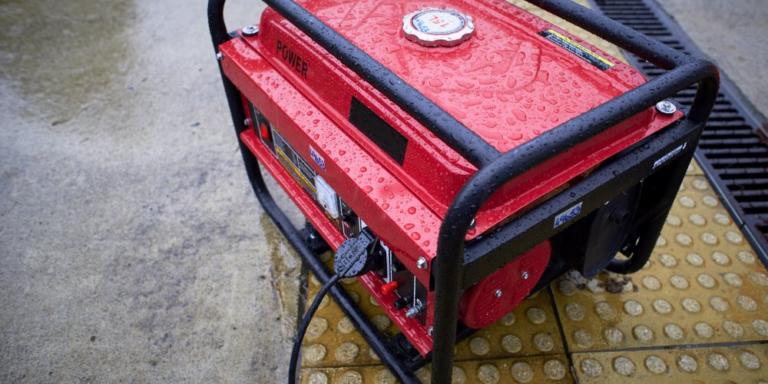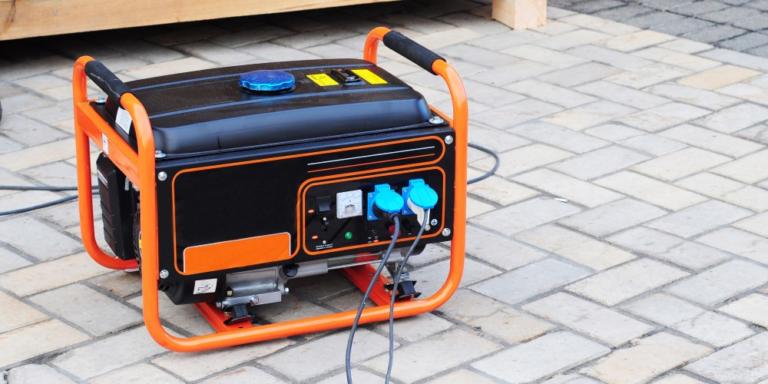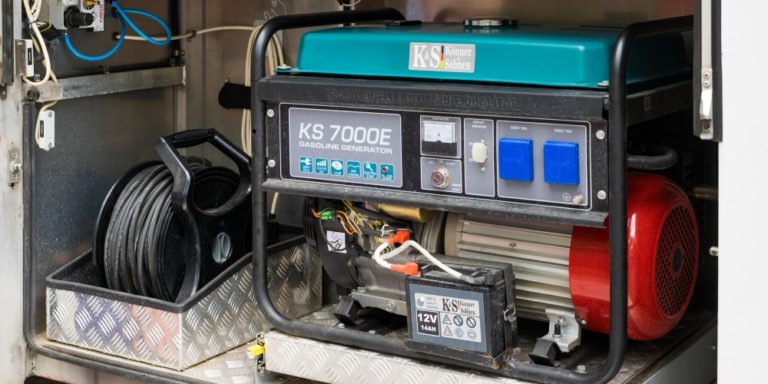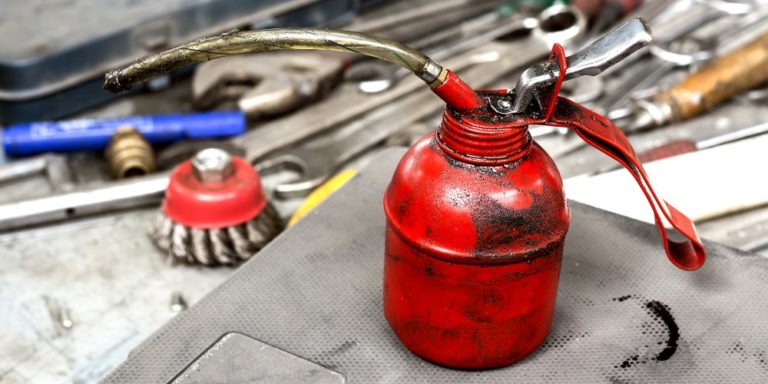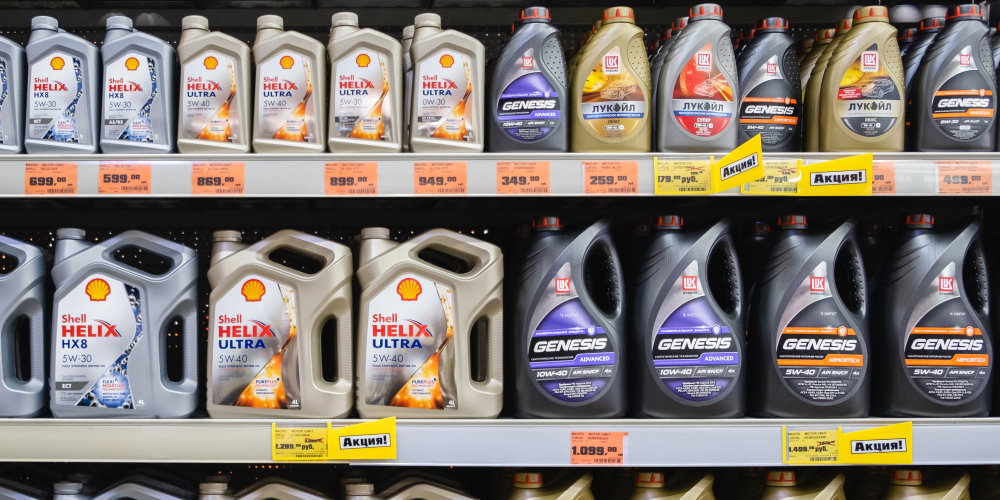
SAE 30 vs 10W30 Oil: The Pros & Cons of Both Oils for Lawn Mower or Generator
Are you thinking about buying the perfect oil type for your lawn mower or generator? I have great news for you!
Our team here at Generatorist has helped over 600,000 visitors find information about generators & engines and we will help you as well.
Let’s begin.
THE KEY TAKEAWAY:
The main difference between SAE 30 and 10W30 motor oil is the viscosity. SAE 30 is significantly thicker and more viscous than 10W30, which means that it flows quite a bit more slowly in low temperatures. SAE 30 oil is not as effective in colder weather as the 10W30 oil. Additionally, SAE 30 is a single-grade motor oil, while 10W30 is a multi-grade motor oil. 10W30 is effective for large motors and can withstand freezing temperatures, but it may be a bit more expensive than SAE 30.
When you’re purchasing motor oil for your lawnmower or generator, deciding which type to buy can be somewhat overwhelming. When you look at all those numbers on the bottles, you may not know the difference.
Two common types of oil are SAE 30 and 10W30.
Although these two kinds of motor oil are very similar, there are also a couple of areas where they differ. Here, we’ll compare both oil types and examine which is the better choice for your lawnmower or generator.
SAE 30 vs 10W30 Oil: What’s the Difference?
The main difference between SAE 30 and 10W30 motor oil is the viscosity. SAE 30 is significantly thicker and more viscous than 10W30, which means that it flows quite a bit more slowly in low temperatures.
Additionally, SAE 30 is a single-grade motor oil, while 10W30 is a multi-grade motor oil. If you’re unfamiliar with these terms, multi-grade oil is oil that contains some type of polymer additive to alter its viscosity.
So, ultimately, the most significant differences between SAE 30 and 10W30 come down to how the two types of oil perform in different temperatures.
The Pros of SAE 30 Oil
HIGH-TEMPERATURE PERFORMANCE
Because of its increased thickness and viscosity, SAE 30 is able to withstand very high temperatures without breaking down.
This type of motor oil has been tested for long periods in temperatures as high as 212 degrees Fahrenheit.
It maintains its thickness and lubricating properties better in hotter environments, making it well-suited for use in engines operating in warm climates or during the summer months.
BETTER FILM STRENGTH & OIL CONSUMPTION
Due to its higher viscosity, SAE 30 oil can form a stronger oil film between engine parts. This helps reduce metal-to-metal contact and wear, providing improved protection for the engine, especially in older engines or those with looser tolerances.
SAE 30 oil tends to have lower volatility compared to some multi-grade oils, resulting in reduced oil consumption over time.
AFFORDABLE
Due to the fact that SAE 30 is a single-grade motor oil, it’s usually relatively affordable.
So, if you go with SAE 30 consistently for your lawnmower or generator, it will save you a fair bit of money over time.
EFFECTIVE FOR SIMPLE MOTORS
As a single-grade motor oil, SAE 30 is typically considered a very effective option for motors that are simple and predictable.
This makes the oil a popular choice for lawnmowers—especially older models.
The Cons of SAE 30 Oil
NOT TESTED FOR COLD TEMPERATURES
Although SAE 30 has been shown to withstand extremely high temperatures, it has not been tested in cold temperatures. While it may work in freezing climates, it is not a certainty.
NOT IDEAL FOR LARGE ENGINES
Typically, single-grade motor oils like SAE 30 are not the best choices for larger, more complex motors. This is because single-grade oils are not as capable of adapting to different engine situations.
SEASONAL OIL CHANGE
If you use SAE 30 oil in your engine, you might need to change it to a more appropriate oil type during colder months, leading to extra maintenance and costs.
LIMITED TEMPERATURE RANGE
SAE 30 oil is a single-grade oil, meaning it has a fixed viscosity at a given temperature. It performs well in higher temperatures, making it suitable for use in warmer climates or during the summer.
However, in colder temperatures, it may become too thick, leading to poor engine lubrication during startup and potential engine wear.
POOR COLD WEATHER PERFORMANCE
As mentioned above, SAE 30 oil can have difficulties flowing smoothly in colder temperatures. This issue can lead to increased engine wear during cold starts, reduced fuel efficiency, and slower engine warm-up times.
The Pros of 10W30 Oil
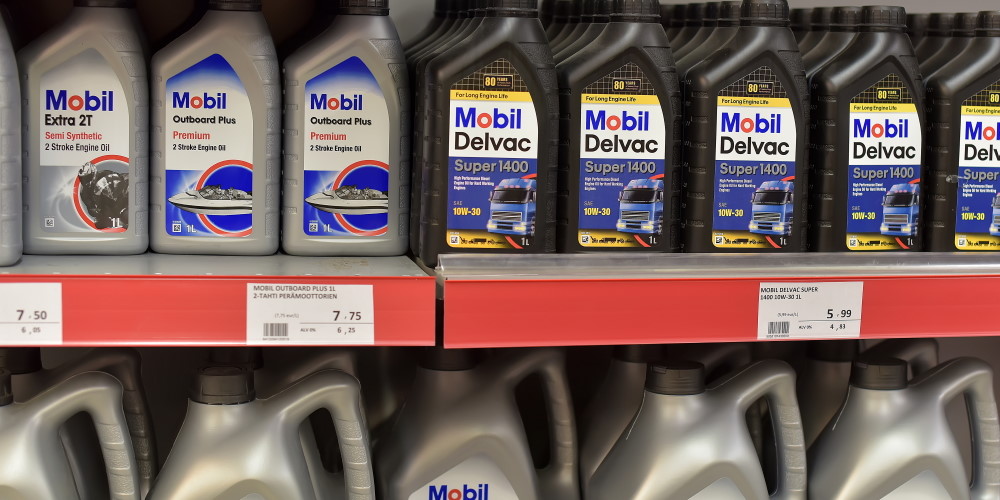
EFFECTIVE FOR LARGE MOTORS
Because 10W30 is a multi-grade motor oil, it can effectively adapt to different engine states. The oil is rated at 10 viscosity when it’s cold and 30 viscosity when it’s hot.
This ability to adapt makes it a quality choice for larger motors, such as the ones on passenger vehicles and robust generators.
COLD-WEATHER PERFORMANCE
One of the significant advantages of 10W-30 oil is its better performance in cold temperatures. The “10W” in its name indicates its winter viscosity rating, meaning it has a lower viscosity when cold.
This property allows the oil to flow more smoothly during engine startup in colder climates, reducing wear and tear on engine components during the critical moments when lubrication is crucial.
So, 10W30 is usually a good choice if you live in a climate where the climate varies significantly.
EXTENDED OIL CHANGE INTERVALS
In many cases, 10W-30 oil can allow for longer oil change intervals, as it maintains its properties and performance over a more extended period compared to single-grade oils like SAE 30.
AFFORDABLE
As a multi-grade motor oil, 10W30 can be a bit more expensive than SAE 30. However, it’s still very affordable on average.
The Cons of 10W30 Oil
NOT OPTIMAL AT HIGH TEMPERATURES
While 10W-30 oil provides better cold-weather performance due to its lower viscosity at low temperatures (the “10W” indicates its winter viscosity rating), it can become relatively thinner at higher temperatures.
This may result in increased oil consumption and reduced film strength, potentially leading to increased engine wear in extremely hot conditions or in engines that operate under heavy loads.
Although 10W30 is typically capable of withstanding high temperatures, it doesn’t handle them as well as SAE 30. This is mainly due to the fact that it’s not as thick or viscous as SAE 30.
LESS EFFECTIVE FOR OLDER MOTORS
Because 10W30 motor oil doesn’t have the viscosity of SAE 30, it doesn’t offer quite as much protection for older engines.
So, if your lawnmower or generator is getting up there in age, SAE 30 may be a better choice.
VISCOSITY BREAKDOWN
The additives used to achieve the multi-grade (10W-30) properties of this oil may break down over time, especially under severe driving conditions or extended oil change intervals. As a result, the oil’s viscosity may degrade, reducing its ability to protect the engine adequately.
When to Use SAE 30 and 10W30 Oil in Your Lawnmower

Generally, you’ll be alright using either SAE 30 or 10W30 motor oil in your lawnmower. However, depending on your specific circumstances, one may be a slightly better choice than the other.
Briggs & Stratton, the renowned producer of lawn mower engines, provides the following information on the ideal type of oil:
- Use SAE 30 in warmer temperatures of 40° F and higher
- Use SAE 10W-30 for a varying temperature range of 0 to 100° F
- Synthetic SAE 5W-30 is the best for very cold temperatures of -20 to as high as 120° F
When it comes to SAE 30 motor oil, it’s typically a good choice if your home is located in a very warm climate. Because SAE 30 withstands hot temperatures so effectively, it does well in warm climates.
Additionally, SAE 30 is usually a good option if you have an older lawnmower, as the viscosity will provide it with extra protection to keep it in good condition.
As for 10W30, you may want to use it for your lawnmower if you live somewhere that’s frequently cold or experiences major fluctuations in the temperature.
Because 10W30 is so adaptable and able to withstand freezing temperatures, it’s an excellent choice in these types of climates. You’d also be wise to choose 10W30 if you have a newer or more advanced lawnmower.
This is because 10W30 motor oil is better at adapting to larger, more complex motors. And a newer, more advanced lawn mower likely won’t need the extra viscosity that SAE 30 provides.
If you are considering switching between SAE 30 and 10W30 oils in your lawn mower, there are a few things to keep in mind:
- Temperature range: If you live in an area with cold temperatures, using 10W30 oil may be a better option as it will provide better engine lubrication during startup. However, if you live in a warmer climate, SAE 30 oil may be a more suitable option.
- Engine age: Older lawn mowers may be more prone to leaks and burning oil. In such cases, using thicker oil like SAE 30 may be a better option as it can help to reduce oil consumption and provide better engine protection.
- Manufacturer recommendations: It is important to check your lawn mower’s owner manual for the manufacturer’s recommended oil type and the viscosity rating. Using an oil type that is not recommended by the manufacturer may affect the mower’s performance and can even void the warranty.
- Oil change interval: Whether you use SAE 30 or 10W30 oil, it is important to follow the manufacturer’s recommended oil change interval to ensure proper engine maintenance.
When to Use SAE 30 and 10W30 Oil in Your Generator
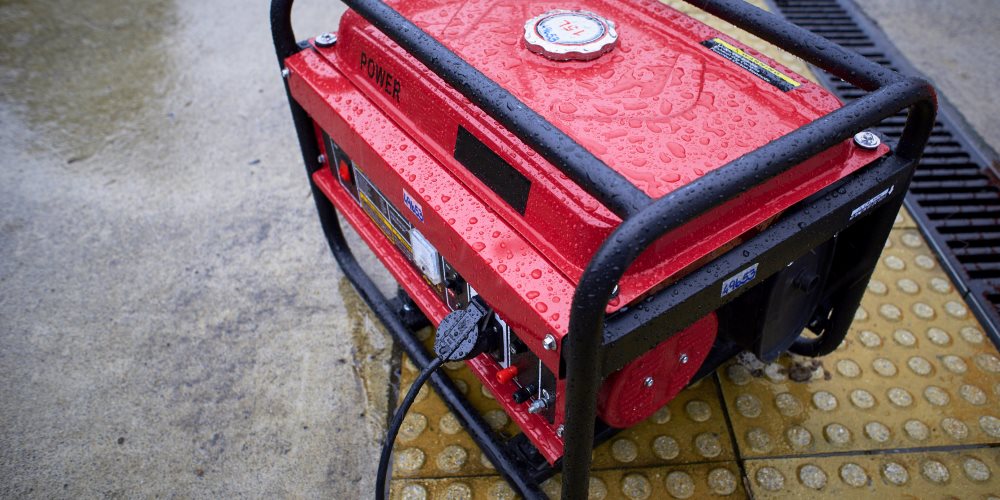
When it comes to generators, you should take the same things into consideration as you would with a lawn mower.
SAE 30 motor oil is a good choice if you live in a very warm climate, while 10W30 oil is better for cold areas or places where the climate changes quite a bit.
However, since generators typically have much more powerful motors than lawnmowers, 10W30 is usually a better choice than SAE 30 in most cases. If you have an older generator that isn’t particularly robust, you’ll probably be fine with SAE30 motor oil.
With most generators and in most climates, though, your generator will be better suited by 10W30 motor oil than SAE 30.
For example, here are the guidelines from the official website of Generac portable generators:
“Above 32°F, use SAE 30. Below 40°F and down to -10°F, use 10W-30. Synthetic 5W-30 can be used in all temperatures. Oil should be changed after the first 20-30 hours of operation and every 100 hours of run time thereafter.”
Here are the recommendations from the official website of Firman generators:
“What type of oil should I use in my FIRMAN generator? Conventional 10w-30 motor oil. If you are operating in below freezing temperatures, use full synthetic 5w-30.”
And we have looked at the best oil types for Predator generators as well:
The SAE 10W-30 oil is recommended for general use for all Predator generators mentioned in this guide. Winter use: SAE 5W-30 & Summer use: SAE 30.
Is SAE 30 Oil the Same as 10W30 Oil?
The answer is no. Although SAE 30 and 10W30 motor oil are pretty similar, they most certainly are not the same.
The main difference comes down to the fact that SAE 30 is a single-grade motor oil. It has a consistent viscosity (thickness) across a range of temperatures. SAE 30 oil is thicker and more viscous than 10W30 oil.
This means that the two types of oil have slightly different strengths, weaknesses, and ideal uses.
For SAE 30 motor oil, the ideal climate is consistently warm weather. This type of oil is not as effective in colder weather as the 10W30 oil. Here are the pros & cons of SAE 30 oil:
- Withstands high temperatures
- Thicker and more viscous than 10W30
- Is affordable
- Effective for simple motors
- Not ideal for large engines
On the other hand, 10W30 oil is a multi-grade oil, which means it has different viscosities at different temperatures.
The “10W” in the name refers to the oil’s low-temperature viscosity, which is designed to flow easily in cold weather, while the “30” refers to its high-temperature viscosity, which provides adequate lubrication at higher temperatures.
It is typically used in a wide range of temperatures, including colder climates and during the winter months. Here are the pros & cons of 10W30 oil:
- Better cold-start performance
- Better fuel economy
- Better engine protection
- Higher cost
- Increased oil consumption
Can You Use SAE 30 Oil Instead of 10W30 Oil and Vice Versa?
When it comes to lawnmowers and generators, the answer is generally yes. You’re fine using either SAE 30 oil or 10W30 oil for either type of appliance.
Although one type may be more effective for certain models of lawnmowers and generators than the other, they will generally both work.
However, this isn’t necessarily always the case with certain other types of motors. Because of the difference in viscosity, there may be circumstances in which only one of the two oil types is effective.
If you use SAE 30 oil in an engine designed to run on SAE 10W-30, you may experience several issues:
- Cold starts: SAE 30 oil may not flow as easily through the engine during cold starts, which can lead to increased engine wear and tear.
- Fuel economy: Thicker oils can reduce fuel economy, so using SAE 30 instead of SAE 10W-30 may result in lower gas mileage.
- Engine wear: The thinner viscosity of SAE 10W-30 provides better protection against engine wear and tear. Using a thicker oil may result in increased engine wear over time.
- Warranty: Using a different oil than what’s recommended by the manufacturer can void your warranty.
In general, it’s always best to follow the manufacturer’s recommendations for oil viscosity and change intervals. They have tested and engineered their engines to work optimally with specific types of oil.
Can You Mix SAE 30 Oil and 10W30 Oil?
Technically, you can mix SAE 30 oil and 10W30 oil, but it’s generally not advised to do so. Because of the differences in the two types of oil, it’s possible that blending them could damage the motor of your lawnmower or generator.
The oil blend will most likely be able to do its job, but if you want to ensure that the motor stays in good condition, you’d be better off choosing one or the other.
The main reason for this is the difference in viscosity between the two types of motor oil.
This discrepancy can impact the ability of the two oils to blend, which can lead to unfortunate results for your lawnmower or generator.
What Is the Ideal Weather for SAE 30 and 10W30 Oil?
When examining the ideal weather conditions for these two types of motor oil, the answer is relatively straightforward.
For SAE 30 motor oil, the ideal climate is consistently warm weather. SAE 30 oil is very reliable in warm weather but not necessarily as effective when the temperature drops.
As for 10W30 oil, the ideal conditions are moderate or cooler. However, the climate doesn’t make as much of a difference with 10W30 oil, as it’s more versatile overall.
It tends to hold up pretty well to hot temperatures, and it adapts to freezing temperatures effectively.
MINERAL VS SYNTHETIC Oil
Another consideration when choosing your oil is whether to use synthetic oil or regular motor oil. So what is the difference here?
Mineral oil is also sometimes referred to as “conventional oil.” This is the way oil has been made for a long time, and is produced by using natural resources (crude oil, which is made from minerals.)
Synthetic oil works slightly differently, however.
This is made artificially using chemical compounds – though in some cases a conventional crude oil may be used first as a base.
Synthetic oils, therefore contain several additives and chemicals that make them distinct from regular oils. The types of these additives and their quantities however are what ultimately determine how it performs.
For instance, conditioners can be used to support neoprene oil seals.
What’s more, is that synthetic oils can help to prevent freezing, while also maintaining the chemical structure of the oil at higher temperatures. In other words, synthetic oil does good for your engine!
HERE ARE THE BENEFITS OF SYNTHETIC OILS:
- Superior performance in extreme temperatures
- Longer service life & extended oil change intervals
- Better resistance to oxidation, thickening, and deposits
- Improved wear protection for engine components
- Higher resistance to thermal and oxidative breakdown
- Improved fuel economy & reduced emissions
You will still find that synthetic oil is graded in the same way, so you still need to consider the temperatures and manufacturers’ recommendations.
Note as well, that synthetic oil is more expensive to purchase, but will typically last a lot longer.
In some cases, synthetic oil may last 2-3 times longer than conventional oil, making it a savvy investment in the long run. Here is one from Amazon that has over 24,840+ positive ratings, feel free to check it out.
Some vehicles – such as Mercedes-Benz – specifically ask that drivers use synthetic oils. Again: follow the directions in your manual!
SYNTHETIC OIL AND YOUR GENERATOR:
Using synthetic oil is safe for your generator. In the past, there were some issues with overheating in small engines when they were first introduced. Nowadays they are completely safe.
For example, the most popular manufacturer of generators – Honda, offers this advice:
“Honda engines are developed, tested and certified with petroleum based motor oils as a lubricant. Synthetic oils may be used; however, any motor oil used in our engines must meet all oil requirements as stated in the owner’s manual.
In addition, recommended oil change intervals must be followed.”
The Bottom Line
Ultimately, SAE 30 motor oil and 10W30 motor oil are very similar, and when you’re choosing between them for your lawnmower or generator, it can be a confusing decision to make.
The good news is that there isn’t necessarily a wrong choice. Depending on the specifics of your circumstance, it’s likely that one of the two will be preferable.
However, the odds are that either of them will work relatively well for your equipment. If you want to ensure that you’re making the best possible choice, though, all you need to do is consider a few factors.
By thinking about your climate, your budget, and the specifics of your lawnmower or generator, you should be able to determine whether SAE 30 or 10W30 motor oil is the ideal option.
READ NEXT ON GENERATORIST:
- Choosing the Best Generator for Your Household
- What Size Generator Do I Need to Run a Refrigerator?
- Best 2000 Watt Portable Generators
- Power Consumption of Household Appliances
- How to Store Your Portable Generator: Short Term & Long Term Storage Tips
- Champion Generators Spark Plug Gap & Socket Size Guide
- List of Electric Appliances & Their Wattage Usage
- What Can You Run on a 2000 Watt Generator?
- How to Easily Tune Up Your Generator
- What Is an Inverter Generator & How Does It Work?
- Predator 3500 Generator Oil Type, Capacity & Change Interval Guide
About Generatorist

Matthew Gerther
Founder, Generator enthusiast
Our aim here at the Generatorist is to become the No. 1 resource for all things related to generators & your power needs. We have helped over 600,000 visitors with our tips, articles and reviews and we will help you as well.
Our work has been featured in many publications around the world – Yahoo.com, Telegram.com, PaylessPower.com, PopSci.com, TopTenReviews.com, TechRepublic.com, iRV2.com, ThePrepared.com, Renogy.com or ADT Solar. Generators are our passion, and we strive to provide the most reliable & most comprehensive information out there.



